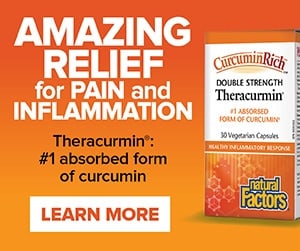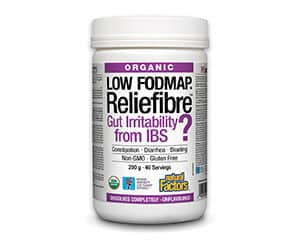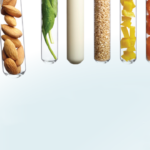
SIBO stands for small intestinal bacterial overgrowth.
It occurs when bacteria colonize upper parts of the small intestine – a place where very few microbes should be living. When bacteria reside in this area, they are allowed massive access to the food we consume, because they live in an area of the gut where nutrients have not yet been absorbed into our bloodstream. This access allows for SIBO bacteria to “steal” our food, and through fermentation, produce a sometimes extremely uncomfortable end product – gas. Bloating is another common symptom of SIBO, and the bloating occurs relatively soon after eating (within the first two hours). Other common symptoms include digestive pain, flatulence, altered bowel function, and malabsorption. All of these uncomfortable side effects can lead to more serious ones, such as brain fog, low energy, moodiness, osteopenia, and depression, so it is crucial to get SIBO under control and treat it right away!
A diagnosis of SIBO is typically done through a breath test, after which a standard protocol is followed. Although a diagnosis through your health care practitioner is essential, here are some dietary changes that can start giving you relief:
1. Optimize stomach acid levels. The pH in our stomach is meant to be very low (or acidic) and has many functions, including protecting our body from pathogens ingested in food or water. As we age, or are under stress, and even when we eat certain foods or take certain medications, stomach acid levels can decline. Subsequently, when food then migrates down into the small intestine, if the environment is not acidic enough, it will not be as effective in inhibiting bacteria from living in this area. Apple cider vinegar or betaine hydrochloride in food or supplement form, can be taken with meals to help promote a healthy stomach acidic pH as well as create an environment less conducive to SIBO.
2. Eradicate SIBO. Several nutraceuticals show promise and seem to be effective at killing the organisms involved in SIBO. Garlic extract, emulsified oregano, and berberine, among others, can help weaken those nasty bugs.
3. Remove their food source. The bacteria which create SIBO love to eat, and when they eat, they ferment. Fermentable foods are therefore going to be their best friend and your worst enemy. Many people are not aware of this fact, but FODMAPs are foods that are highly fermentable. The acronym stands for fermentable oligosaccharides, disaccharides, monosaccharides, and polyols, and a low-FODMAP diet helps reduce the symptoms of SIBO and irritable bowel syndrome (IBS).
4. Destroy biofilms. Biofilms are slimy extracellular matrices that allow bacteria and other organisms to protect themselves from harmful factors in the environment, such as antibiotics and the host body’s immune system. Specific enzymes in supplement form, when taken on an empty stomach, can assist in the digestion of these biofilms, making the organisms more susceptible to antibacterial treatments that are dispensed in SIBO treatment protocols.
5. Keep your bowels moving well. Another risk factor in SIBO is a sluggish bowel. When peristalsis, or the waves of smooth muscle contraction along the length of the colon, is impaired, bacteria can migrate up into the areas where they should not exist. Enteric-coated peppermint oil with caraway aids in the relaxation of smooth muscle and improve this migrating motor complex. Other prokinetics (supplements that help acid reflux) include ginger and 5-HTP.
6. Replenish good bacteria. Last, but not least, is the re-introduction of good bacteria. Not only do they contribute to replenishing the bacteria in the large intestine, but studies also suggest that certain strains of bifidobacteria may help reduce symptoms of SIBO and, perhaps more importantly, not recolonize the small intestine. Bifidobacterium longum BB536® is the “golden child” of probiotics, so when supplementing with probiotics, it is vital to choose a product that does not include prebiotics so as not to feed SIBO at the same time.
| Food Category | High-FODMAP foods | Low-FODMAP foods |
|---|---|---|
| Vegetables | Artichoke, asparagus, cauliflower, garlic, green peas, leek, mushrooms, onion, sugar snap peas | Aubergine/eggplant, beans (green), bok choy, capsicum (bell pepper), carrot, cucumber, lettuce, potato, tomato, zucchini |
| Fruits | Apples, apple juice, cherries, dried fruit, mango, nectarines, peaches, pears, plums, watermelon | Cantaloupe, grapes, kiwi fruit (green), mandarin, orange, pineapple, strawberries |
| Dairy and alternatives | Cow’s milk, custard, evaporated milk, ice cream, soy milk (made from whole soybeans), sweetened condensed milk, yogurt | Almond milk, brie/camembert cheese, feta cheese, hard cheeses, lactose-free milk, soy milk (made from soy protein) |
| Protein sources | Most legumes/pulses, some marinated meats/poultry/seafood, some processed meats | Eggs, firm tofu, plain cooked meats/poultry/seafood, tempeh |
| Breads and cereal products | Wheat/rye/barley-based breads, breakfast cereals, biscuits, and snack products | Corn flakes, oats, quinoa flakes, quinoa/rice/corn pasta, rice cakes (plain), sourdough spelt bread, wheat/rye/barley-free breads |
| Sugars/ sweeteners and confectionery | High-fructose corn syrup, honey, sugar-free confectionery | Dark chocolate, maple syrup, rice malt syrup, table sugar |
| Nuts and seeds | Cashews, pistachios | Macadamias, peanuts, pumpkin seeds, walnuts |
| Food Category | High-FODMAP foods |
|---|---|
| Vegetables | Artichoke, asparagus, cauliflower, garlic, green peas, leek, mushrooms, onion, sugar snap peas |
| Fruits | Apples, apple juice, cherries, dried fruit, mango, nectarines, peaches, pears, plums, watermelon |
| Dairy and alternatives | Cow’s milk, custard, evaporated milk, ice cream, soy milk (made from whole soybeans), sweetened condensed milk, yogurt |
| Protein sources | Most legumes/pulses, some marinated meats/poultry/seafood, some processed meats |
| Breads and cereal products | Wheat/rye/barley-based breads, breakfast cereals, biscuits, and snack products |
| Sugars/ sweeteners and confectionery | High-fructose corn syrup, honey, sugar-free confectionery |
| Nuts and seeds | Cashews, pistachios |
| Food Category | Low-FODMAP foods |
|---|---|
| Vegetables | Aubergine/eggplant, beans (green), bok choy, capsicum (bell pepper), carrot, cucumber, lettuce, potato, tomato, zucchini |
| Fruits | Cantaloupe, grapes, kiwi fruit (green), mandarin, orange, pineapple, strawberries |
| Dairy and alternatives | Almond milk, brie/camembert cheese, feta cheese, hard cheeses, lactose-free milk, soy milk (made from soy protein) |
| Protein sources | Eggs, firm tofu, plain cooked meats/poultry/seafood, tempeh |
| Breads and cereal products | Corn flakes, oats, quinoa flakes, quinoa/rice/corn pasta, rice cakes (plain), sourdough spelt bread, wheat/rye/barley-free breads |
| Sugars/ sweeteners and confectionery | Dark chocolate, maple syrup, rice malt syrup, table sugar |
| Nuts and seeds | Macadamias, peanuts, pumpkin seeds, walnuts |














